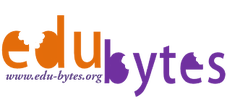Can you use an LMS (Learning Management System) for training CRICOS students?
The answer is ‘yes’, but how could you make it work practically, while maintaining compliance with CRICOS requirements?
At Edubytes, we often get asked by CRICOS RTOs if we would supply our learning resources in paper-based form. The answer is always ‘no’, because we don’t believe that using paper-based resources provide the optimum learning experience. All our resources sit on a state-of-the-art Training Organisation Management System, which incorporates an LMS, or Learning Management System.
The LMS is a cloud-based library of high quality resources, including multi-media video content, technical documents, standards, and integrated assessment. It allows us to create simulated on-line environments that mimic real working environments, and give students access to case studies, guest lecturers, and interviews with industry experts anywhere in Australia. Why would anyone want to replace that with boring, dry, dull, PDF workbooks or learner guides?
Another reason why using our LMS is ideal for international students is because it provides support for students who do not have English as their first language. This cohort makes up a huge part of the international student market. Although the courses must be delivered in English and assessment must be conducted in English, many students may struggle with English grammar, or technical jargon. The LMS has a Google Translate widget embedded in it, which allows students to translate a question into their language of choice. They can choose from over 30 languages, including Persian, Arabic, Hindi, Spanish, and Mandarin. Of course, they usually need to answer the questions in English, but having this invaluable tool makes their learning experience more enjoyable, and allows them to focus on the actual course content.
But aren’t there strict rules about students attending classes for minimum hours per week in order to maintain their student visas? Yes, there are, but just because the learning content is online does not mean that students no longer need to attend classes.
So how does integrating on-line learning and assessment work in real life, in a CRICOS college?
Well, here is one way that CRICOS RTOs are using a high quality learning management system with international students;
- Students attend classes in a classroom with a trainer as is standard practice for most CRICOS colleges.
- The trainer uses the on-line content to create and direct his/her session plan. Instead of boring Powerpoint presentations, the trainer has access to rich, engaging multi-media, and activities that stimulate class discussion, and which the trainer can supplement with their own experiences and activities. The trainer can project the content onto a screen at the front of the class, just as they do with more traditional software such as Powerpoint.
- Once the classroom based lectures are complete, the students can turn on their laptops or devices, and start the assessment, using the LMS. The assessment questions are randomised, using a computerised bank of questions, which ensures student’s cannot plagarise or copy from other students.
- On-line activities and scenarios engage the students in realistic simulations of tasks they need to learn to complete the course.
- The trainer can focus on helping students who need extra assistance, while students who require less help are not held back by their slower classmates.
- Practical skills are practised and assessed in the campus, as standard practice, following the detailed instructions provided in the LMS assessment resources.
- The trainer can mark students work and provide typed or video feedback using the LMS web-cam verbal response tool.
The results from using the above process have been outstanding, with students reporting an improved learning experience, and less burden on the trainer. The training delivery is more consistent, because the LMS resources assist the trainer.
A further feature of the LMS is the Workplace Activity Recorder. More and more RTOs are including work-placements in their Training and Assessment Strategy. Students are required to spend several weeks working for an employer on internship placements. To record this activity, the LMS includes an electronic log-book, which students can complete using their smartphone. They enter the location, date, and description of the workplace activity into the Workplace Activity Recorder, together with any photographic evidence. The system helps them map this evidence to the units they are studying.
Once the Workplace Activities are completed for a unit, the LMS will generate an Employer Report (also known as a Supervisor, or Third party Report). This report is emailed or sent by SMS to the employer to verify the activities completed. The employer simply clicks a button to verify this document, and the response is logged in the LMS.
So, yes, a Learning Management System is a valuable tool for CRICOS RTOs. Our CRICOS clients also had the benefit of getting through COVID lockdowns with almost no disruption to their training, because they were prepared and able to pivot quickly to on-line training when allowed to do so.
Contact Edubytes for more information on how you can make the switch to better quality education for international students. The above information is intended only as a guide and suggestions on what is possible.

